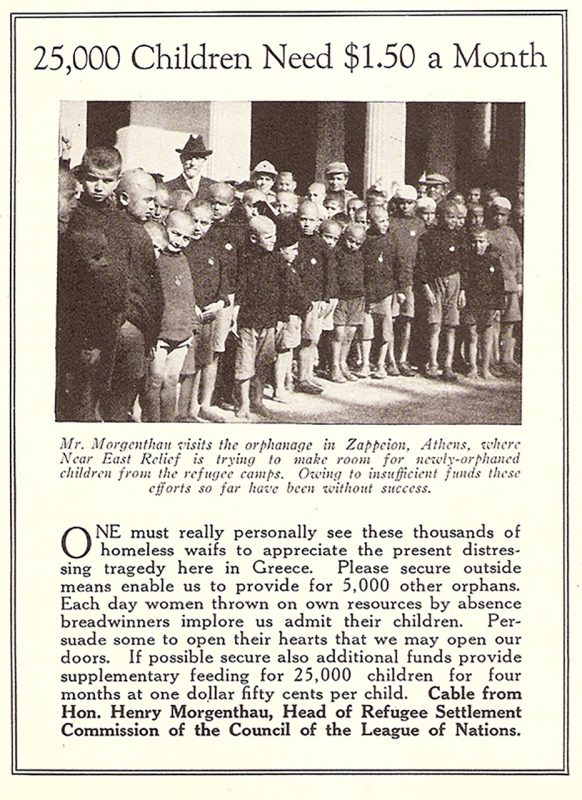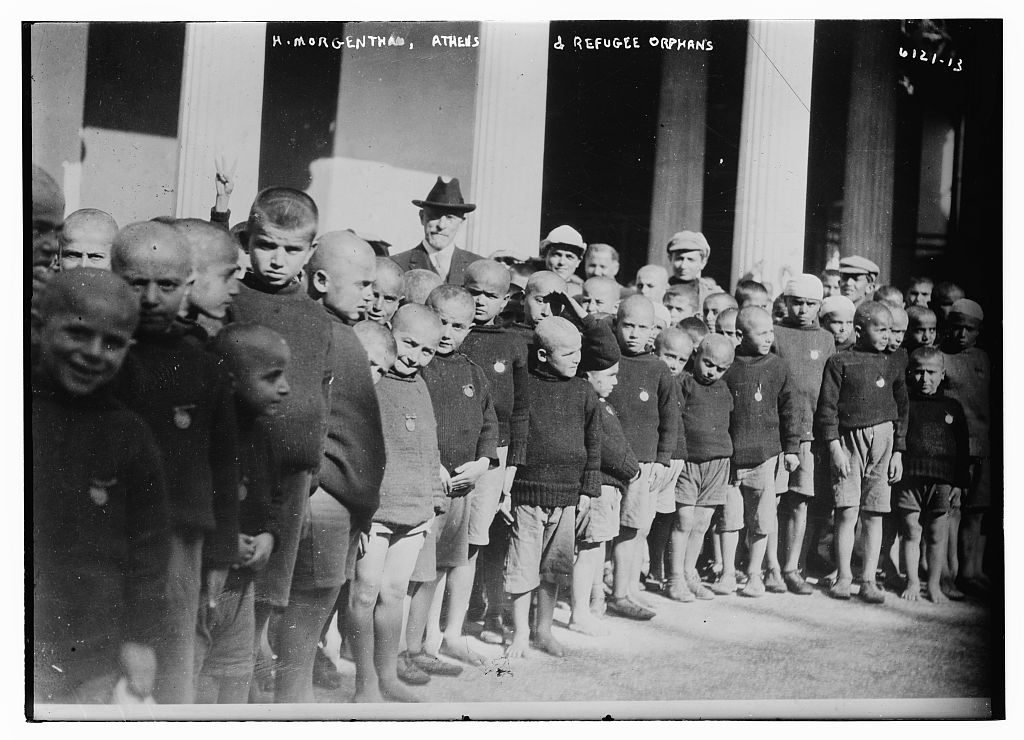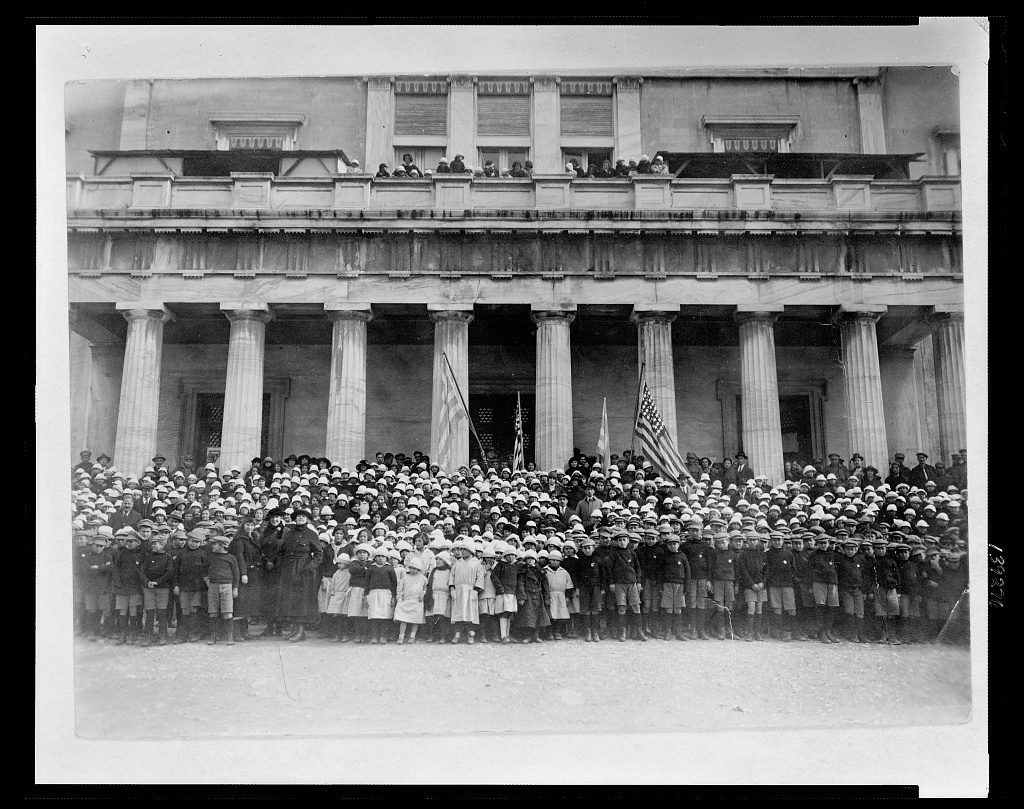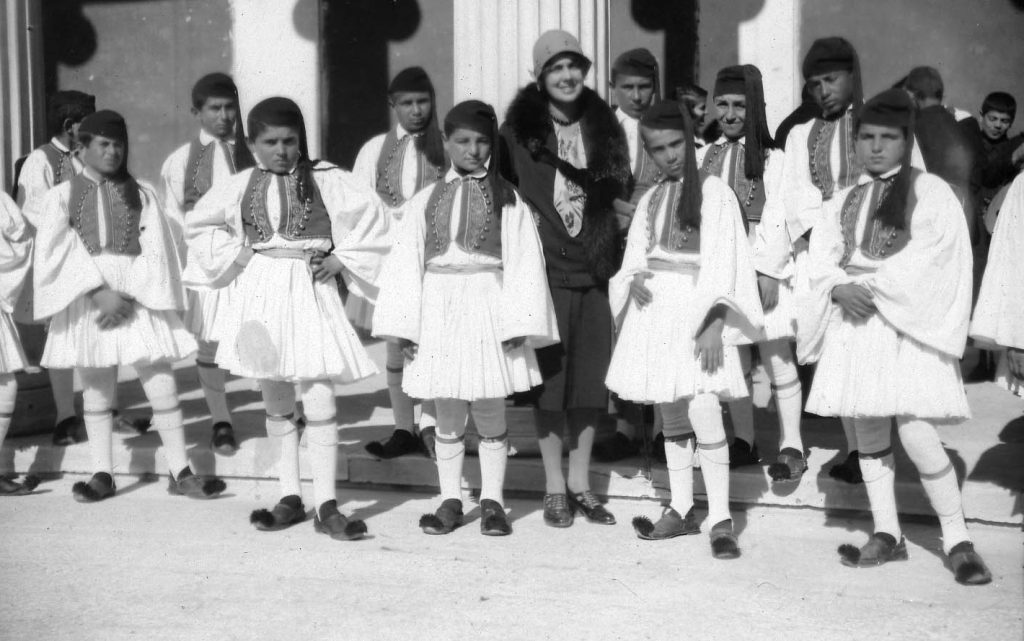Near East Relief in Athens, Part 2
We found so many fantastic pictures from Near East Relief’s work in Athens that one Dispatch just wasn’t enough. You can read Part 1 here.

RETURNING TO ATHENS
Your loyal curator (me, Molly) was so taken with the images from Near East Relief’s work in Athens that I couldn’t help but return to the ancient city for a second Dispatch.
Athens also held great meaning for Henry Morgenthau, Sr. The American Ambassador to the Ottoman Empire made international news when he spoke out against the Genocide of Armenians, Assyrians, and Anatolian Greeks in 1915. Morgenthau’s telegrams to the State Department were instrumental in the creation of Near East Relief.
After the destruction of Smyrna in September 1922, the League of Nations created the Greek Refugee Settlement Commission. Morgenthau accepted the position of American representative and Commission chairman. He would work with three fellow Commissioners and the Greek government to address the influx of refugees, who were in dire need of food, clothing, shelter, and medical care. When Morgenthau arrived in Athens in 1923, the road ahead must have seemed nearly insurmountable.

Former Ambassador Henry Morgenthau, Sr., poses with boys from the Zappeion. Athens, Greece, c. 1923. Library of Congress.
Near East Relief had collaborated with the Greek government to find emergency housing for thousands of young children from Anatolia, but work with adult refugees was more difficult to organize. Less than a year after Near East Relief’s arrival in Greece, the governments of Greece and Turkey negotiated an unprecedented agreement: an exchange of part of each country’s population based on religious background. About 1.3 million ethnics Greeks would leave Anatolia to be resettled in Greece, while 500,000 ethnic Turks would leave Greece for resettlement in Turkey. The individuals involved had no choice in the matter. All of these people became refugees.
Near East Relief and the Refugee Settlement Commission were tasked with protecting the human rights of nearly 2 million refugees during the population exchange.

Near East Relief orphans from the Zappeion and Old Palace orphanages, 1923. Library of Congress.
TOURING THE ZAPPEION
The former Ambassador’s work involved close collaboration with Near East Relief, including Athens-based leaders like H.C. Jaquith. Morgenthau’s own work focused on adult refugees and families rather than orphans, but he maintained a profound interest in orphanage operations. He found the time to make a tour of the new Near East Relief orphanages in Athens. This included the Zappeion Orphanage, a former exhibition hall loaned by the Greek government.
The Zappeion was home to 2,000 Armenian and Anatolian Greek orphans who had made the harrowing journey from Turkey. The enormous building also served as the busy headquarters for all Near East Relief operations in Greece. The former Ambassador was impressed by the speed and efficiency with which Near East Relief had converted the Zappeion into a large-scale orphanage, complete with educational and vocational programs.

Near East Relief boys in traditional Greek costumes entertain a visitor to the Zappeion, c. 1923.
ENTERTAINING VISITORS
Morgenthau quickly learned that his Greek colleagues were so busy with urgent refugee issues, that they had not had the opportunity to visit the Near East Relief orphanages. As a pioneering member of Near East Relief, Morgenthau took great pride in the organization’s work in Greece. He delighted in taking Greek officials to the Zappeion to meet the boys and tour the facilities.
The children of Near East Relief liked to greet important visitors in style. The boys from the Zappeion orphanage often donned Greek costumes to entertain the former Ambassador and his guests with traditional dances. The boys took great pride in reciting speeches for their honored guests — this was an excellent opportunity to show off their language skills. Orphanage entertainments always featured a performance by the Zappeion orchestra. The musical group was made up of blind children, most of whom had lost their sight to the contagious eye disease trachoma. The children were studying musical performance as a form of vocational training.
These visits to the Zappeion served a diplomatic purpose as well as a social one. A tour of Near East Relief’s facilities was a powerful reminder of all that had been accomplished, and all that remained to be done. For Morgenthau, a visit to the Zappeion was an affirmation of the United States’ commitment to helping Greece — a country that had opened its doors to so many people in need — through this time of crisis.

Henry Morgenthau (in black coat and white hat) with guests at the Zappeion Orphanage, c. 1923. Library of Congress.
Morgenthau recorded his memories from this time period, including his visits with Near East Relief orphans and workers, in a 1929 book titled I Was Sent to Athens. One brief account of a nighttime visit to the Zappeion offers a simple but heartwarming picture of orphanage life:
When we arrived [at the Zappeion] it was late in the evening and we found only a few dim lights still lit. We were escorted into the great unfurnished barracks and there beheld one of the most touching scenes -- eight hundred small boys all sound asleep on blankets laid on the bare floor. Despite the lack of comfort, their faces indicated that their sleep was troubled by none but pleasant dreams.

Postcard of boys from the Zappeion, c. 1924. Library of Congress.
